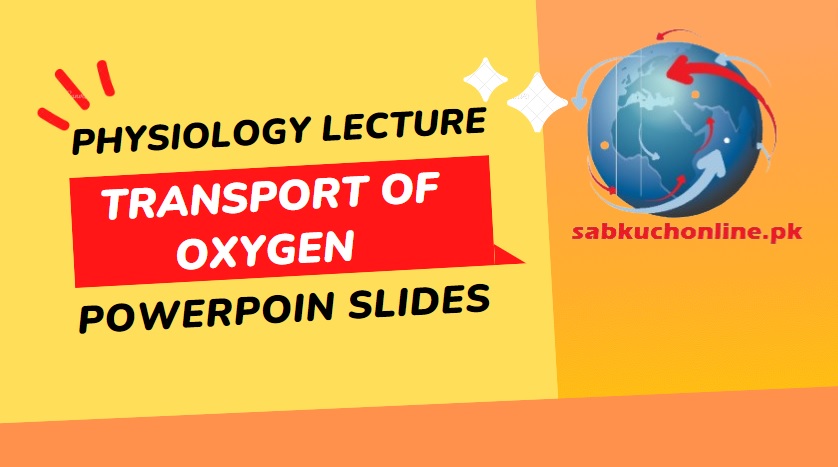Learning Objectives:
- At the end of the lecture, the students should be able to:
- Explain the partial pressures oxygen and carbon dioxide in various parts of body
- Explain the role f hemoglobin in oxygen transport
- Discuss oxygen-hemoglobin dissociation curve and factors shifting it to right or left.
Oxygen


Oxygen at tissue level



- Increasing blood flow increases the interstitial fluid PO2
- Increasing tissue metabolism decreases the interstitial fluid PO2
Carbon dioxide at tissue level


Carbon dioxide


- Increasing the blood flow decreases interstitial PCO2
- Increasing metabolic activity increases interstitial PCO2
Transport of Oxygen
- 3% of oxygen is transported in dissolved state in blood
- 97% of oxygen is transported by hemoglobin
- 30-100 times more due to hemoglobin
Oxygen Transport
- When PO2 is high : O2 binds with hemoglobin
- When PO2 is low: O2 is released from hemoglobin

Oxygen and hemoglobin
- 1.34 ml of O2 in each gmof Hb
- 15gms of Hbwill carry 20.1 ml of O2 / 100ml of blood
- (if 100% saturated)
- It is 19.4 ml / 100ml of blood (97% saturated)
- 14.4 ml / 100ml of blood (75% saturated) (venous end of capillaries)

Effect of exercise on Oxygen transport
- 15ml of oxygen is transported /100ml of blood during strenuous exercise
- As the PO2 decreases from 40mmHg to as low as 15mmHg in interstitial fluid
- There can be a total of 20 times increase in the oxygen transport
Utilization Coefficient
- % of blood that gives up O2 as it passes through the tissue capillaries
- Normal 25%
- increase to 75-80%
- Upper limit of Oxygen in Tissue = PO2 40mmHg
- It occurs because it causes the oxygen release from the hemoglobin.
- If PO2 is more Oxygen binds with Hemoglobin


